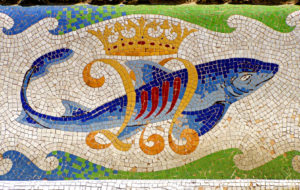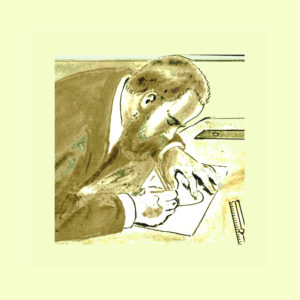November 30, 2023
The main difference between mosaic, the traditional technique, and “trencadís” is that the pieces of the former have been designed, from the outset, as tiles and, therefore, follow regular measurements, which almost always apply to straight surfaces. In contrast, “trencadís” pieces can come from a coffee cup, a plate, a soup bowl, or a bottle. Since they are broken pieces, each one has a different size and shape, and being irregular, they can better adapt to a curved surface, such as those favored by Gaudí.

It is not very clear if Gaudí was the first architect to apply “trencadís,” but undoubtedly, he took it to its highest level, along with his assistant Josep M. Jujol. However, neither of them was the only modernist architect to develop mosaic techniques, seeking new possibilities both in terms of motifs and materials. In their time, for example, other techniques such as hydraulic mosaic were also discovered and perfected. “Trencadís,” therefore, is part of a set of aesthetic concerns characteristic of modernism. However, “trencadís” did not emerge suddenly. In reality, it is part of a long local tradition of covering walls with colored tiles, widespread in Catalonia and Valencia since the Middle Ages, following the Hispano-Arabic tile style, which had its heyday in the 18th century but continued to evolve until the rise of modernism, another significant period for mosaic and ceramics.
The “official” debut of “trencadís,” in its current sense, took place in the Güell pavilions (1883-1887), one of the first buildings commissioned to Gaudí by Eusebi Güell. The architect’s genius quickly saw all the possibilities of the new technique, the first of which was that it could be applied to any material. Torre Bellesguard (1900-1909) is a good example of the level of sophistication that Gaudí achieved with the “trencadís” technique. In the garden benches, as well as in some columns of the facade and the vestibule balcony, Gaudí applied the most well-known material, namely, ceramic. However, on the facade of the house, he experimented with a new material, stone, specifically slate, and at the pinnacle of the tower, with glass pieces to give more brilliance to the Catalan flag (1).
In summary, the relationship between “trencadís” and Gaudí is so deep that one of the flagship activities we offer at Bellesguard is “trencadís” workshops in collaboration with the company Mosaiccos, with whom we organize workshops for schools, team-building activities, and events. This Christmas, for example, we invite you to come and enjoy the most magical time of the year at Bellesguard by decorating a Christmas figure with “trencadís.” Next week, we will provide more details about this activity.
Notes
Freixa, Mireia, and Saliné, M., (2018), “From Güell Pavilions to Torre Bellesguard,” in: Gaudí and Modernist “Trencadís,” Triangle Postals, Barcelona, pp. 39-67.




